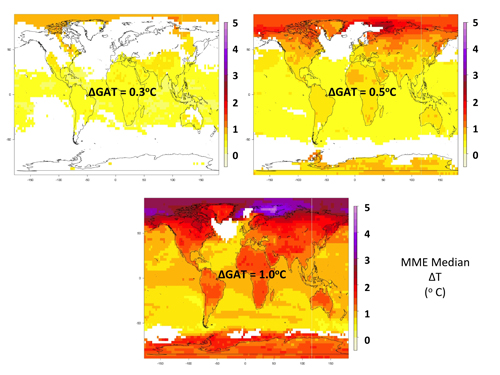Choosing the Next Scenarios:
How Close Is Too Close, How Different Is Too Different
By:
Claudia Tebaldi
NCAR
Join us for coffee beginning at 10:00 a.m.
Click for a Live Broadcast.

Abstract
The sensitivity of regional climate to global average radiative forcing and temperature change is important to setting global climate policy targets and designing scenarios. Setting effective policy targets requires an understanding of the consequences of exceeding them, even by small amounts, and effective design of sets of scenarios requires knowing how much different emissions, concentrations, or forcing needs to be to produce substantial differences in climate outcomes. Using CMIP5 climate model simulations, we quantify how differences in global average quantities relate to differences in both the extent and magnitude of climate outcomes at regional (250-1250 km) scales.
We show that differences of about 0.3°C in global average temperature or 0.75 Wm-2 in global radiative forcing are required to generate statistically significant changes in regional annual average temperature over more than half of the Earth's land surface. A global difference of 0.8°C is necessary to produce regional warming over half the land surface that is not only significant but reaches at last 1°C.
s much as 2.5° to 3°C is required for a statistically significant change in regional annual average precipitation that is equally pervasive. We also show that global average temperature change provides a better metric than radiative forcing for indicating differences in regional climate outcomes due to the path dependency of the effects of radiative forcing. (Work in collaboration with J.F. Lamarque and B. O'Neill.)
Time permitting, I will also sketch the current proposal regarding the new set of scenarios that will be proposed as forcing pathways for future simulations within CMIP6, whose choice was partly informed by this work.




